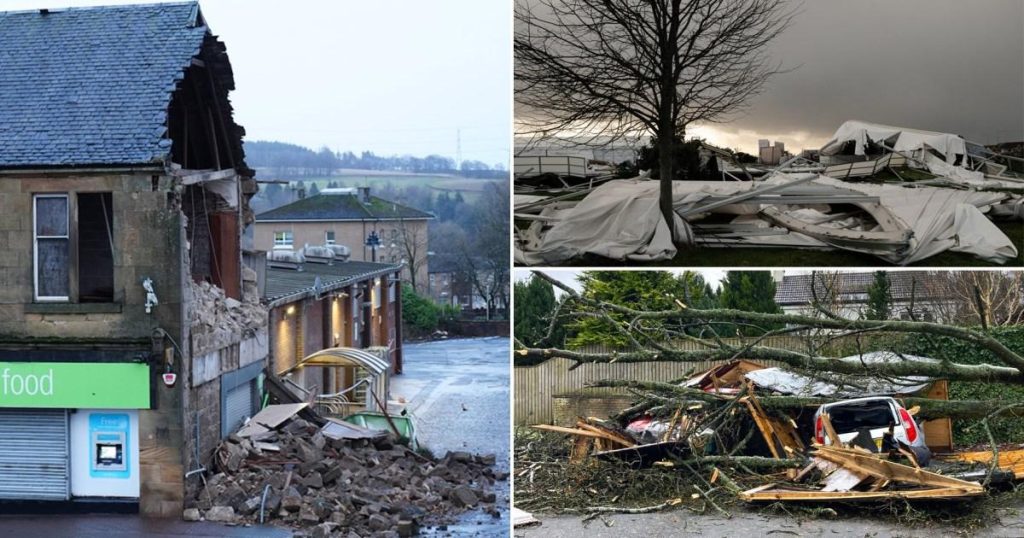Storm Eowyn, deemed by the Met Office as “probably the strongest storm” to impact the UK in at least a decade and potentially the most severe in two to three decades for the hardest-hit regions, wreaked havoc across the country and parts of Ireland. The storm brought with it record-breaking wind speeds, reaching 114 mph in Mace Head, County Galway, Ireland, and 100 mph in Drumalbin, South Lanarkshire, Scotland. This ferocious weather system resulted in widespread power outages affecting over a million people, significant travel disruptions, and tragically, a fatality in County Donegal, Ireland, where a falling tree claimed the life of a 20-year-old man.
The storm’s impact was extensive and varied. Fallen trees blocked roads, damaged buildings, and disrupted rail services. Network Rail Scotland reported over 400 incidents of damage to infrastructure, including signalling systems, overhead wires, and station facilities. Sporting events were also affected, with Celtic’s football match against Dundee postponed due to storm damage at Celtic Park. The sheer volume of incidents overwhelmed emergency services, with Police Scotland responding to nearly 1,900 weather-related calls. The scale of the damage left by Storm Eowyn painted a stark picture of the storm’s intensity and reach, impacting both urban and rural areas.
While the UK and Ireland were still grappling with the aftermath of Storm Eowyn, another storm, named Herminia, was brewing. Although not expected to be as powerful as its predecessor, Herminia posed a “greater risk” of further damage due to the potential for impacting already weakened infrastructure. This impending storm prompted a new set of weather warnings across the UK. Yellow warnings for wind, heavy rain, and gusts reaching up to 70 mph were issued for various regions, raising concerns about potential flooding and additional disruptions. The quick succession of storms underscored the volatile weather patterns affecting the region.
The impending arrival of Storm Herminia raised concerns about exacerbating existing problems caused by Eowyn. The Met Office cautioned that the heavy rainfall anticipated with Herminia, coupled with already saturated ground from the previous storm, could lead to widespread surface water and river flooding. This posed a significant threat to communities still recovering from Eowyn’s impact. The back-to-back storms put a strain on resources and hampered recovery efforts, highlighting the challenges posed by extreme weather events.
The power outages caused by Storm Eowyn were particularly widespread and enduring. Hundreds of thousands of homes and businesses across Scotland and Northern Ireland remained without electricity even days after the storm passed. Power companies worked tirelessly to restore services, but the extent of the damage meant that full restoration would take several days. The prolonged outages underscored the vulnerability of power grids to extreme weather and the significant disruption such events can cause to daily life. The sheer volume of calls received by power companies – equivalent to a month’s worth in a single day – further illustrated the scale of the impact.
The government responded to the crisis by convening an emergency Cobra meeting, involving government ministers and First Ministers of Scotland and Northern Ireland. Discussions focused on coordinating the response to the storm and ensuring that affected communities received the necessary support. Appeals for patience were made while essential services were restored, and the government pledged to work closely with partners until power was restored to everyone. The scale of the disruption caused by Storm Eowyn underscored the importance of coordinated emergency response and the need for robust infrastructure capable of withstanding extreme weather events. The storm served as a stark reminder of the power of nature and the challenges of mitigating the impact of such events.


